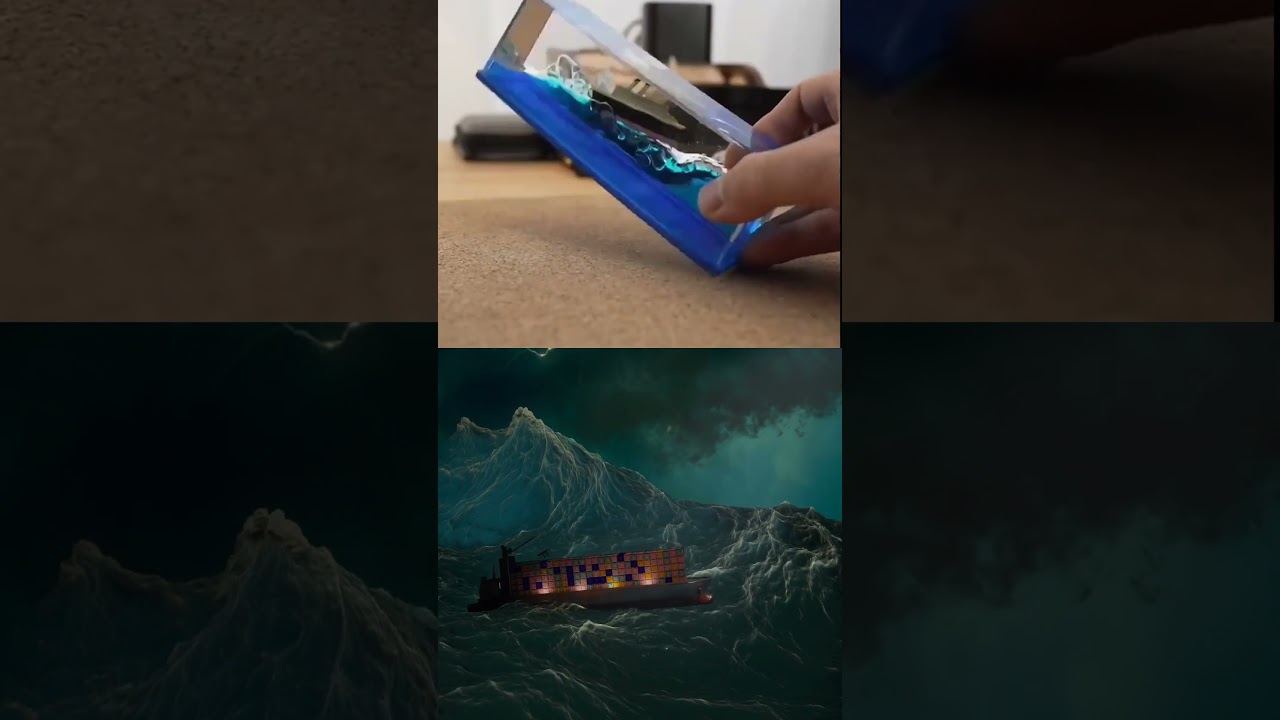Welcome to our blog post, where we take you on a thrilling adventure through the treacherous world of stormy seas. Brace yourself as we delve into the heart-pounding tales of nature’s wildest tempests and explore the indomitable spirit of sailors who have faced these terrifying waters. From bone-chilling tales of shipwrecks to jaw-dropping encounters with towering waves, we bring you a collection of spine-tingling stories that will leave you in awe of the sheer power and unpredictability of stormy weather. So, grab a life jacket and join us as we navigate through Scary Stormy Seas. #shorts #stormyweather
Scary Stormy Seas: Navigating the Choppy Waters #shorts #stormyweather
Introduction
Stormy weather has a certain allure to it. The thunder rumbling in the distance, lightning illuminating the dark sky, and rain pouring down can create a sense of thrill and excitement. However, when it comes to the open sea, stormy weather can quickly turn into a terrifying ordeal. In this article, we will explore the dangers of stormy seas and provide some essential tips for navigating through these treacherous waters.
The Fury of Mother Nature
-
Raging Storms
- The power of a storm can be awe-inspiring, with winds reaching hurricane speeds and waves towering over ships.
- The unpredictability of stormy seas makes it crucial to be prepared and take every precaution.
-
Navigating the Unforgiving Waves
- When faced with stormy weather, experienced sailors know that the most critical tool is knowledge.
- Understanding how to read weather patterns and interpret meteorological reports can help sailors anticipate storms and plan accordingly.
-
The Skill of Seamanship
- Seamanship is of paramount importance when facing stormy seas.
- The ability to handle a vessel in challenging conditions requires skill, experience, and a steady hand.
Safety Measures on the Open Water
-
Proper Equipment
- A well-maintained vessel equipped with the necessary safety gear can significantly increase your chances of survival at sea.
- Life jackets, flares, and emergency communication devices are indispensable when confronting stormy weather.
-
Understanding Maritime Rules
- Familiarize yourself with the International Regulations for Preventing Collisions at Sea (COLREGs) to avoid accidents when visibility is limited.
- These regulations include guidelines on right of way, navigation lights, and sound signals.
-
Stay Informed
- Weather forecasting has come a long way, enabling sailors to receive accurate and timely updates on approaching storms.
- Utilize technology, such as weather radar and satellite imagery, to stay informed about potential severe weather conditions.
Conclusion
While stormy seas can be a source of fear and anxiety, they also serve as a reminder of the immense power of nature. Navigating through these challenging waters requires a combination of skill, knowledge, and preparedness. By respecting the fury of the open sea and taking the necessary precautions, sailors can minimize the risks associated with stormy weather.
FAQs: Frequently Asked Questions
-
Q: Can you recommend any YouTube videos for learning more about navigating stormy seas?
- A: Yes, you can check out this informative video on stormy sea navigation: YouTube Link.
-
Q: Is there a website where I can find more resources on sailing and maritime safety?
- A: Absolutely! Visit plrvideoshorts.com for a wealth of information on sailing, safety guidelines, and more.
-
Q: Does this article contain any affiliate links to Amazon products?
- A: Yes, this article contains Amazon Associate disclosure statements. However, please note that there are no additional costs incurred when purchasing through these links.
-
Q: Can you provide additional details about maritime rules and regulations?
- A: Detailed information about maritime rules and regulations can be found in official resources such as the COLREGs. We encourage you to consult these publications for comprehensive guidelines.
-
Q: Does this article cover any aspects related to music at sea during stormy weather?
- A: While this article focuses primarily on the dangers and safety measures associated with navigating stormy seas, it does not specifically address music-related topics.











